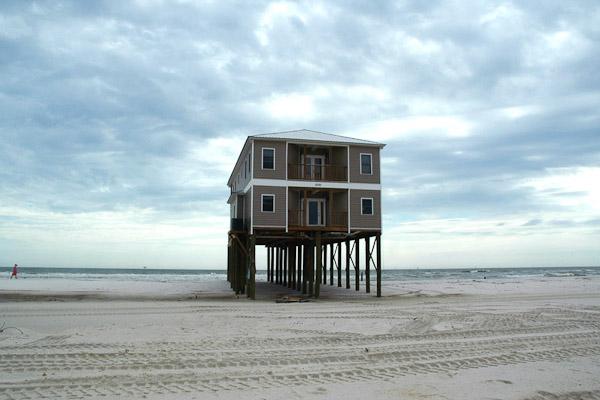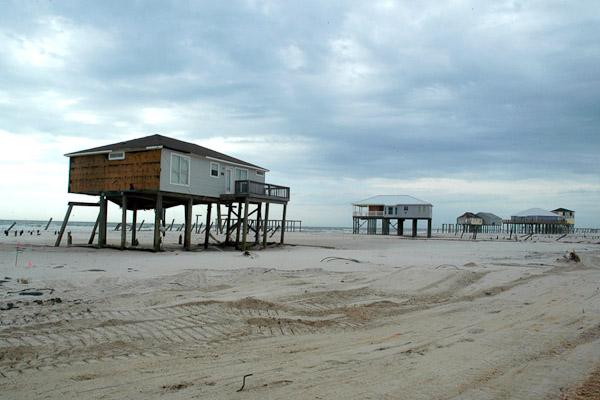Steve Rowell
Vacation: Dauphin Island
2006
In collaboration with the Center for Land Use Interpretation.
An exhibit on display at the Center for Land Use Interpretation’s Los Angeles exhibit hall in the winter of 2006, as part of the Center’s Coastal Islands: Fragments of America program. The exhibit, titled Vacation: Dauphin Island, looked at the community there as a representative extreme of the architecture that has immerged in the hurricane and flood-prone Gulf coast.



Naturally, Dauphin Island is a dynamic, migrating sand bar, a barrier island in the Gulf of Mexico, off the coast of Alabama. French settlers first named it “Isle Massacre,” as it was littered with skeletons when they found it. Over the years this marginal land was claimed by France, Spain, England, and the Confederate nation. At the island’s more solid eastern tip is Fort Gaines, guarding the mouth of Mobile Bay, into which Admiral Farragut charged in the American Civil War, famously uttering “Damn the torpedoes—Full speed ahead!” Following the Civil War, the island slowly became a community of leisre, with a summertime population more than five times larger than the year round population.
Dauphin Island’s remaining battle is with the ocean, whose hurricane winds and surging surf threaten to wipe its western half clean. The island was ransacked by hurricanes Frederick in 1979, Danny in 1997, George in 1998, and Ivan in 2004. Rebuilt homes, funded by FEMA- backed insurance policies, grow back on higher and higher stilts, floating like domestic hovercraft above the crashing waters. The latest round of storms, 2005’s Dennis, Katrina, and Wilma, erased dozens of houses off the island, and left many of the surviving, damaged homes teetering, in limbo in a no-man’s land. Dauphin Island, it seems, is another one of those places determined to go away.
More:
CLUI LOTL newsletter article